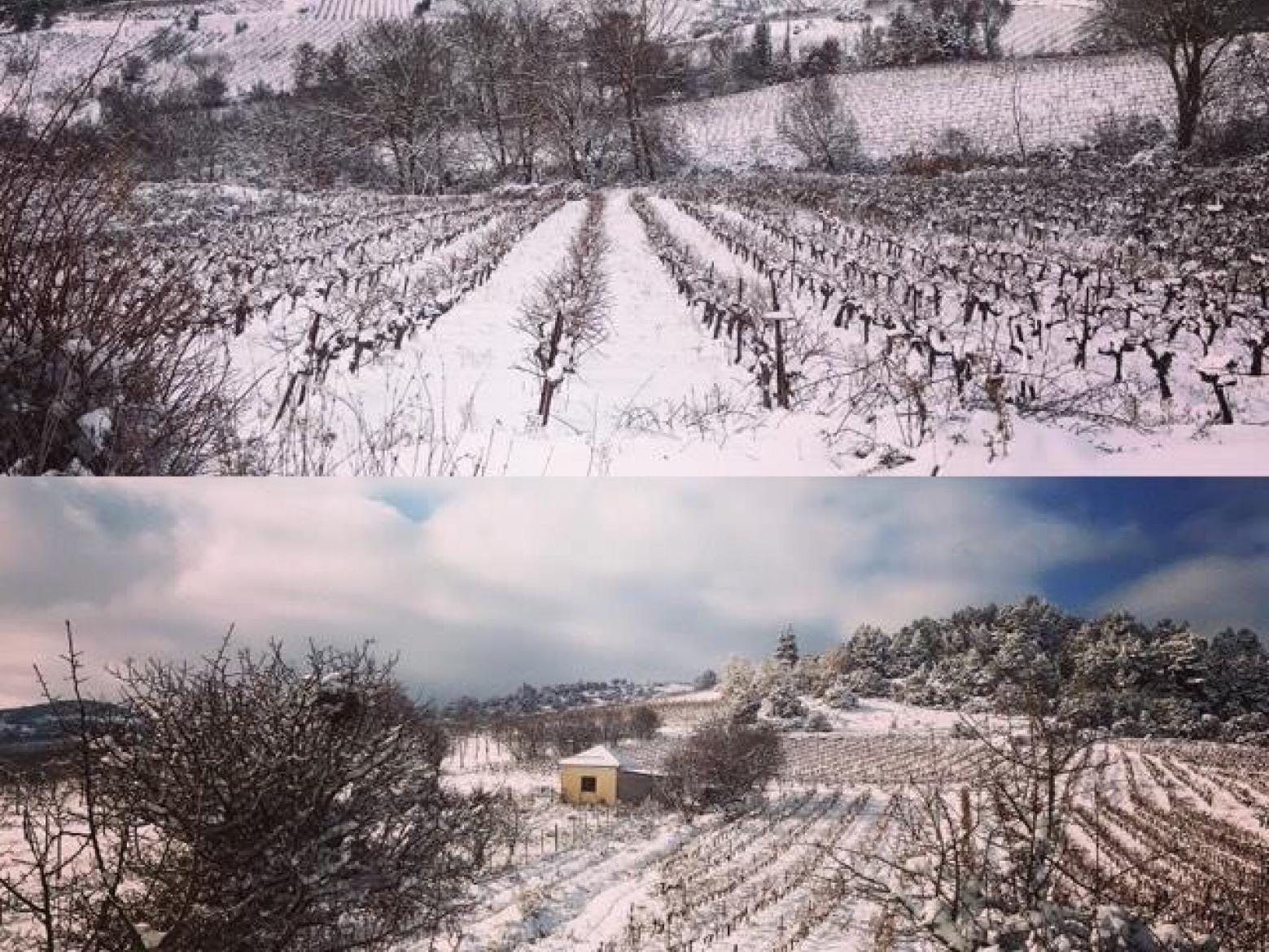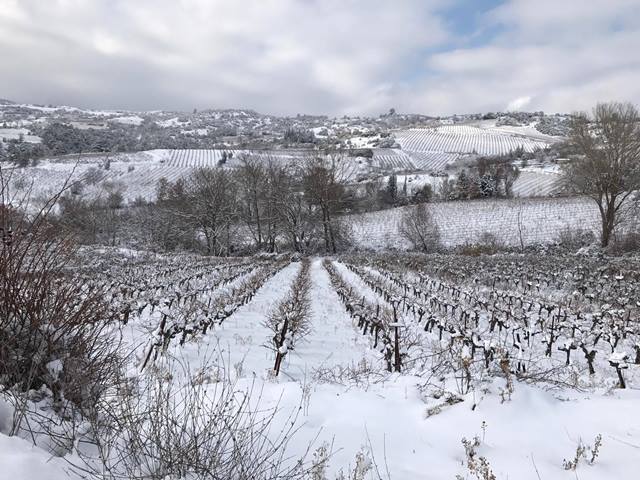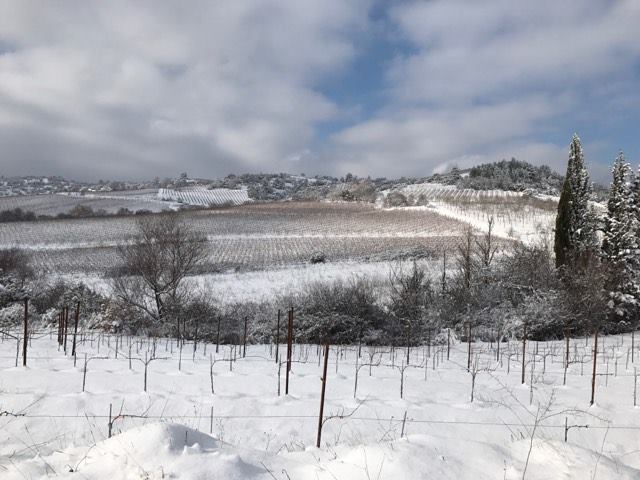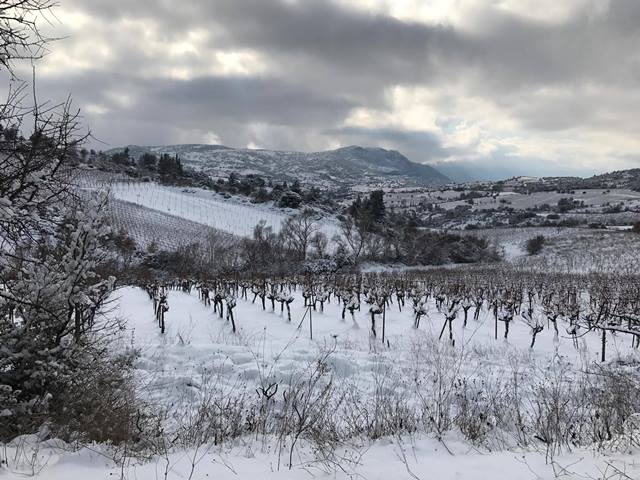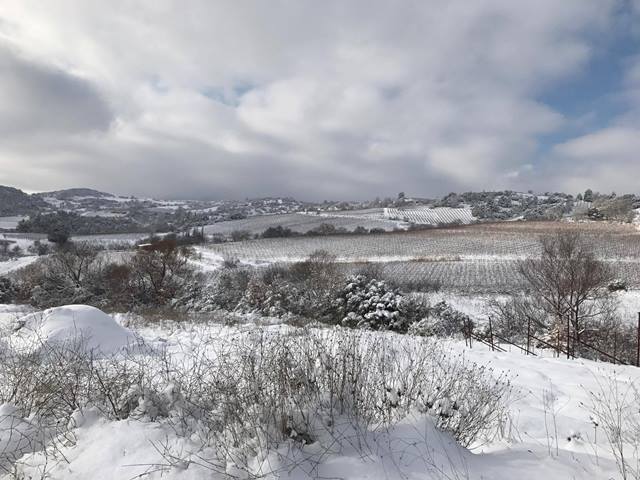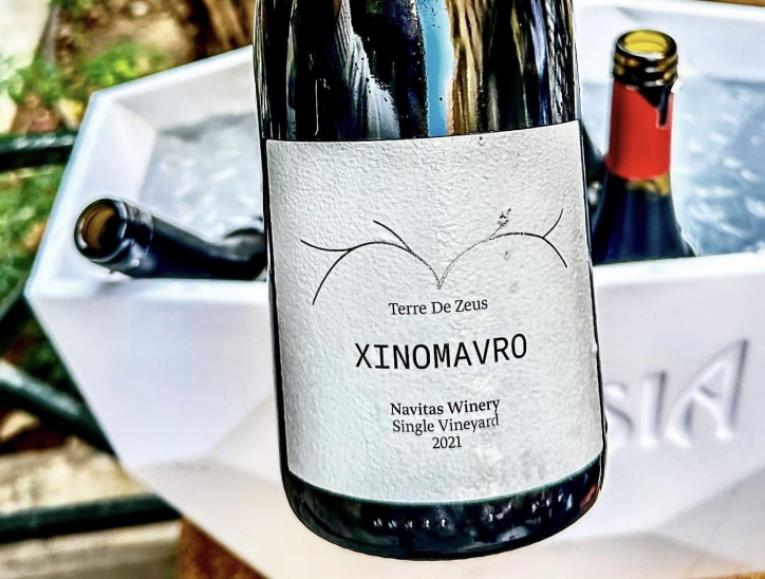Asprokabos, the other Nemea
Asprokabos located about 20 km away from the center of Nemea is another hidden Greek terroir that deserves more attention and recognition, possessing all the characteristics for the production of high quality wines. A recent visit I made just a few days ago under adverse weather conditions (just check the photos) showed clearly the potential of the breathtaking hillside terroirs which have a Burgundy or Piemonte aura.
Being one of the unofficial subzones of Nemea PDO, the largest PDO in Greece, it combines this beautiful landscape with high altitude vineyards some rising up above 850 m while the lowest are located at 650 m. This means two things, first that Asprokabos is one of the coolest mesoclimates in the country and second that there is big diurnal temperature range, of about 15ºC in the winter and even 20ºC during summertime, which is crucial for the preservation of acidity and for building tannin structure. In fact, Asprokabos' heat summation during the growing season is approximately 300 GDD (Growing Degree Days) lower than the classic Nemea says Professor Stefanos Koundouras from the Aristotle University in Thessaloniki.
As one of the coolest mesoclimates in Greece together with Metsovo in Epirus, Amyndeon in Macedonia and Mantinia in Peloponnese and with temperature showing an increasing trend over the last decades Asprokabos' potential is highly valued with relation to the classic warm Greek summers. It needs, however, a smooth September to get top quality fruit, something not always achievable because of rainfall during that time.
Achilleas Lampsidis of Katogi-Strofilia explains that harvest takes place about 15 days later compared to the classic Nemea terroirs with some hillside vineyards reaching even 14º Baumé; Koundouras comments that the best terroirs are the poorer hillside soils. '' These are generally heavy soils with some calcium carbonate below the surface horizon (60-80 cm) that produce excellent wines provided their exposure is to the south or the west''.
I find that Asprokabos and especially its rolling hills show another dimension of Nemea offering a distinct wine profile and some extra excitement, yet is a wild country and for the moment just 5 wineries (Katogi-Strofilia, the two Pyrgakis cousins, Bizios and Daskalas) are to be found there. Producers Elias Bizios and Lampsidis bring up however that a lot of Nemean producers - with top names included among them - seek fruit from Asprokabos to provide freshness and structure in their wines. ''If I were to craft my ''perfect'' Nemea'' says Lampsidis ''I would blend 30% fruit from Asprokabos for the structure, 40% from mid-slopes vineyards and 30% from the lower lying parts in Ancient Nemea''. The wines are so distinctive explains Bizios with firm tannins, fresh acidity and clarity of primary fruit, they can age superbly and their colour is much deeper.
The wildness of the landscape, the distance from Nemea, the challenges for ripening the grapes - Agiorgitiko in particular - make it perhaps a more exotic version of Nemea, more Old World in style perhaps. Another distinctive expression for sure! Looking forward to returning during springtime to explore more and check also the Lyre training systems that Lampsidis has adopted.
Some wines to try from Asprokabos:
Bizios Nemea 2011
Blackberries, firm tannins, structured wine with freshness and nice complexity. Fine oak integration, stylish and savoury as well.
Katogi Strofilia Mountain Fish 2015
Unoaked Agiorgitiko version, charming and delicious with juicy red fruit and velvety texture.
Pyrgakis Spilia Nemea 2012
Only from Asprokabos vineyards since 2012 vintage this is powerful but also polished with a long scented juicy finish. Next vintage will be 2014.
